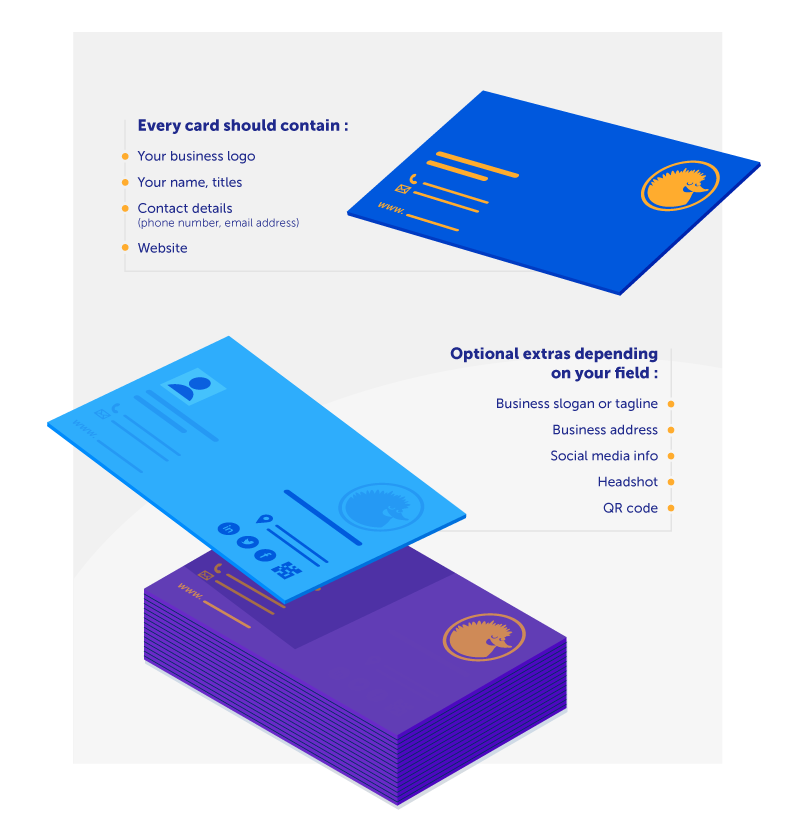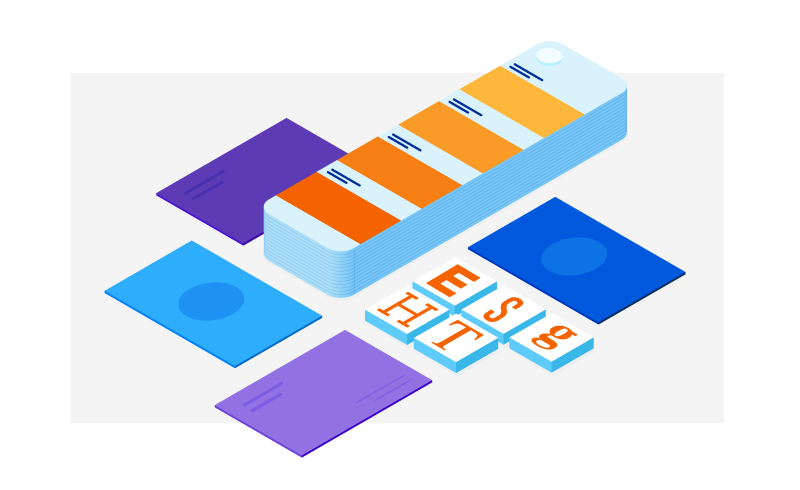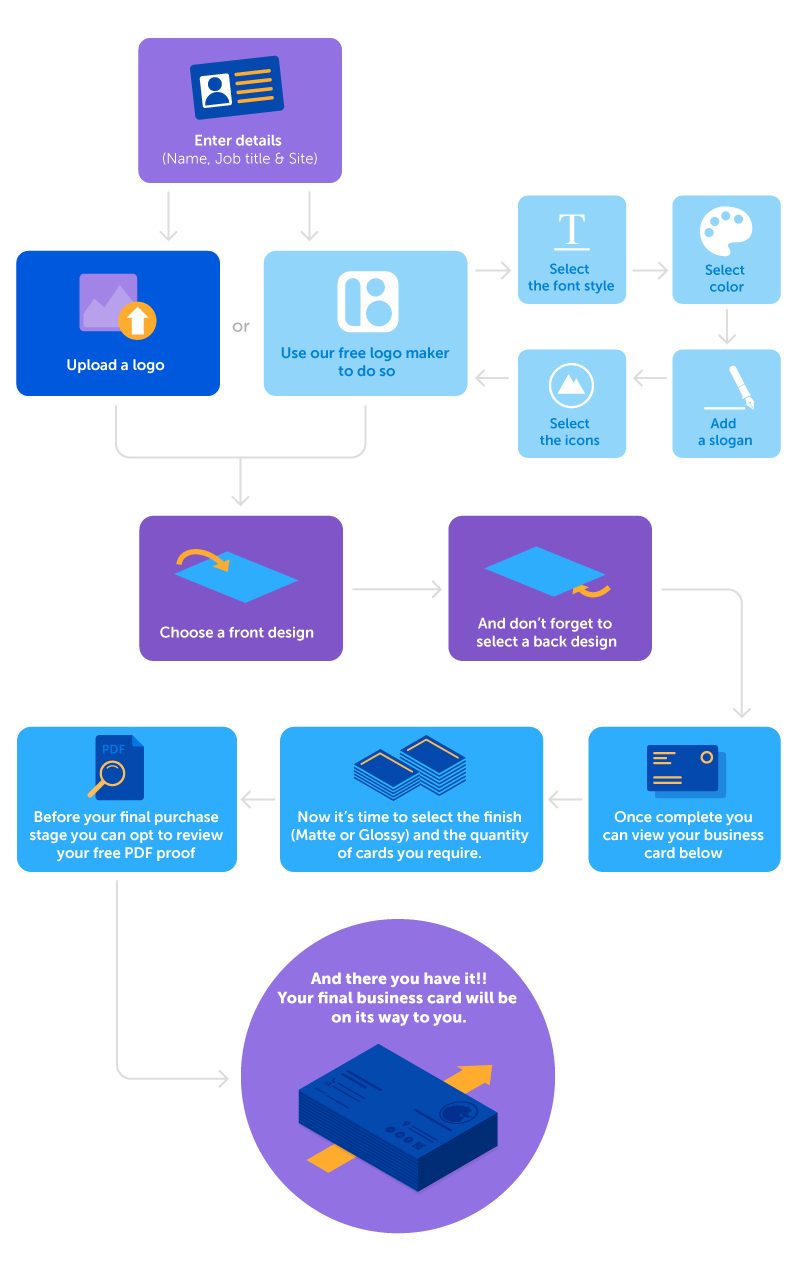| Subtotal | $0.00 |
| Subtotal | $0.00 |

In a world where more and more business dealings are moving online, business cards remain a staple. Business cards make for a tangible means of keeping people connected in a way that is more personal – and more memorable – than merely exchanging email addresses or social media details.
For the more strategic-minded, business cards are not only a way of easily sharing contact details, but also an extension of branding. From color schemes to font choices, business cards are an ample opportunity to advertise what your business is about. The quality of your business card communicates how seriously you take your business. A poor quality business card can actually do more harm than good.
To those just starting out, creating business cards may seem like an expensive investment. But it doesn’t have to be. These days, there is a range of ways you can make business cards without breaking the bank. This article will run through some of the ways you can create your own business cards cheaply and easily.
Anyone can make business cards. But before diving straight into the process, you should think about the following five factors:
It goes without saying that the information you include on a business card shouldn’t be an afterthought; it’s the main attraction, after all. But you need to be smart about it. Only the most crucial information should be included, as the surface area of a business card is limited. Every inch counts.
What you include will obviously be highly dependent on your area of business and particular expertise. Generally speaking, business cards should feature the following:
An effective business card should reflect your branding, and central to branding is a memorable logo. Your logo should take center stage and draw the eye, giving it the opportunity to stand out amid a stack of other business cards. Standard practice is to place the logo on the top left corner. Some people like to put it on the front and the back of the card. Ultimately, it’s up to you.
If your business logo doesn't have a logo yet, check out our free logo maker for a fast, easy way to create a memorable logo.
This is pretty straightforward, but there are also some things to consider. Obviously the name you print here should be your actual name, but it doesn’t have to be the exact name your parents gave you if nobody calls you that. For instance, if your actual name is “Jonathan Doe”, but everyone calls you John, then write John on your business card. This prevents awkward conversations down the line and will also instill a sense of familiarity from the outset.
You can also include qualifications at the end of your name (e.g. MA, Ph.D.), but only if it’s relevant to what you do. You might be very proud of your doctorate of history and want to shout about it from the rooftops, but it is in no way relevant to your graphic design business. Clients won’t care.
Choosing a business title is pretty straightforward if yours is already clearly, such as “Writer”, “Accountant”, “web designer”, etc. It’s a little bit harder if you perform several roles within your company. One of the solutions here is to come up with a descriptive title that is all-encompassing, although this isn’t always possible or practical. Another option is to choose the title of your main function in the company. Try to avoid anything too general, otherwise, people won’t know what you do. If you’re still stumped about your job title, check out this helpful article on the subject.
Lastly, if you are working on behalf of a business or own your own business - include it!
The two contact details you need to include on your business card are your email address and phone number.
Social media details are optional and dependent on your line of business. Again, this is due to the limited real estate of your business card surface. If your clients are unlikely to use Twitter or Facebook, then there’s no need to direct them there when that space could be used for more relevant content. It makes more sense to direct them to a website that everyone can access without having to register a social media profile.
Whether you’re a freelancer or run a small business, you should have a website. That website should be included on your business card. A social media page isn’t enough (as we mentioned in the previous point, not everyone is on Facebook). If you’re a freelancer or a small business owner that doesn’t have a website, you should make one. If you don’t know where to start, let us help you with that.
Now that you’ve figured out your business cards must-haves, it’s time to consider the optional extras that can really elevate your card above the rest. Beyond how you can be contacted, is there anything else you’d like to communicate via your business card?
Here are just a few optional extras that can help your business card stand out:
A snappy, memorable summation of what your business does can be a great way to bolster branding alongside your logo. If you’re not sure where to start, read our guide to creating an effective brand statement.
Including a business address is only necessary when you actually have a physical office where clients will come to consult with you. If you’re running an online business from the safety of your bedroom, you can probably leave it off.
Depending on your field, you can elevate your card by including something helpful and relevant to a client’s interests. People are more likely to hold on to something if they find it useful. For example, on the back, you could include some tips and tricks relevant to their interests, or even an interesting statistic or chart. If you sell goods or services you could include a discount code.
Before you go gung-ho and decide to go for all the optional extras, we should talk about the importance of “blank space”. Every inch of your business card counts, certainly, but that doesn’t mean the whole thing has to be filled out. That will only result in a cluttered card that’s hard to read, where the most important information is difficult to find. That’s why careful consideration of blank space is just as important as deciding which information to include. Many people also opt for keeping the back of their card completely blank so that people can easily jot down important notes to remember you by.

When it comes to deciding what fonts to use on your business cards, readability should be your top priority. Mixing fonts can bring added interest to the card, but it’s typically recommended that you don’t use more than two, otherwise you’ll just distract from your message.
Furthermore, the fonts should be complementary and don’t forget to consider your logo when deciding on fonts. If your font features an eye-catching font, you should opt for something more pared-back for the rest of the card. Sometimes using one font for the entire card, but bolding, italicizing, or using different sizes in specific areas can make for an attractive but simple contrast.
The color scheme of your business cards shouldn’t be an afterthought. For the sake of consistency, the colors you choose need to be in line with your overall branding and should definitely complement your logo.
As a general rule, bright colors are considered more playful and youthful, while darker, more subdued colors, will lend a more serious tone. White is clean and simple. Everything about your business card, even something seemingly insignificant like the colors, can send a message about who you are and what you’re about.
Paper stock refers to the quality of paper your business card is printed on. Quality does matter, because what use is a well-designed card if the quality is flimsy and the finish lackluster? You want the paper stock to be thick enough so that it doesn’t tear easily, but not so thick that it won’t fit in standard business card holders or wallets.
Whether you choose a matte or glossy finish for your card is mainly comes down to personal preference and won’t impact on the professionalism of your card. With a matte finish, a protective coating is applied to the card for a more “dull” look. A matte finish is generally considered to work on cards with more text, while a glossy finish suits more colorful cards.
Whether you want to go standard or get creative with your business cards will also come down to personal preference. But there are also more functional factors to think about While a business card with a zany shape may be a conversation starter and cool at the moment, it’s ultimately impractical. It’s likely to be tossed aside for other cards that are easier to slip in a pocket or credit card holder.
The standard size of 2 x 3 inches is standard for a reason. People are more likely to hold on to them and refer back to them later.

Now that you’ve decided on the content and general design of your business card, it’s time to get them made. But how do you go about doing that by yourself? There are a few avenues you can go down when it comes to designing yourself and then getting it printed.
If you have no design experience, the most straightforward way to design a business card is with a premade template. Some online printing companies have templates that you can edit. There are also numerous free templates you can find across the web that you can download and edit in Microsoft Word or Microsoft Publisher. These options are fine if you are happy with something straightforward and generic, but the result might be something unprofessional that hundreds of others have also used. This is why we recommend using a business card generator (which we’ll talk about more in a bit).
Once you have your business card designed, it’s time to get it printed! The options for this are:
While printing yourself can seem like the cheapest option, be aware that it will probably take some trial and error. While you can buy pre-perforated business card paper to print your cards on, you’ll need to be very careful that what’s on your computer screen matches the layout of the paper. You will need to own a very high-quality laser or inkjet printer, and even then the result might still be sub-par. You should also consider the number of business cards you need to have printed. The price of ink and paper can add up, so you’ll almost certainly save money by going for a professional printer.
The problem with DIY business cards is that very often you can tell they’re homemade. By getting your business cards printed professionally you will be safe in the knowledge that the result will be to a high standard.
While going completely down the DIY route with your business cards may appear to be the most affordable option, this isn’t necessarily the case. Using an online business card generator where you have more control over the customization of your design, that will also take care of printing for you, will more than likely save you time and money in the long run.
Namecheap’s Business Card Maker is an easy-to-use business card generator with which you can create and order business cards in just a few simple steps. It features a wide range of templates that you can customize to your tastes. With the tool’s choice of colors, fonts, and the option to upload your own logo, the possibilities for your business card are endless.

When you’re done, we’ll print it for you on high-quality paper and deliver it straight to your door. It’s an affordable way to make a professional impact.
Making business cards is easier than you might think. These days, you don’t need to spend hundreds of dollars to get professional-looking business cards that will make a good impression. Use Namecheap’s Business Card Maker for affordability without sacrificing quality. After all, what goes in your customer's wallet doesn't have to hurt your wallet.
Need help? We're always here for you.